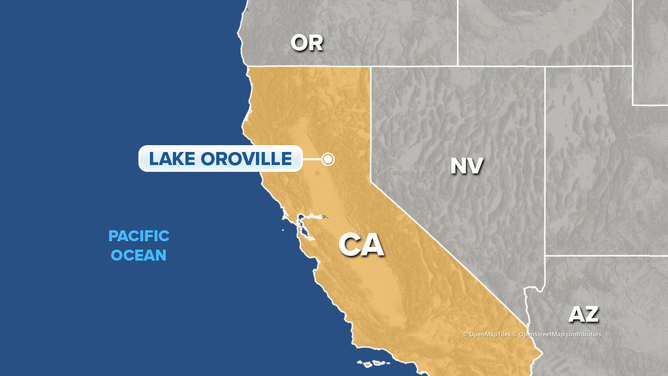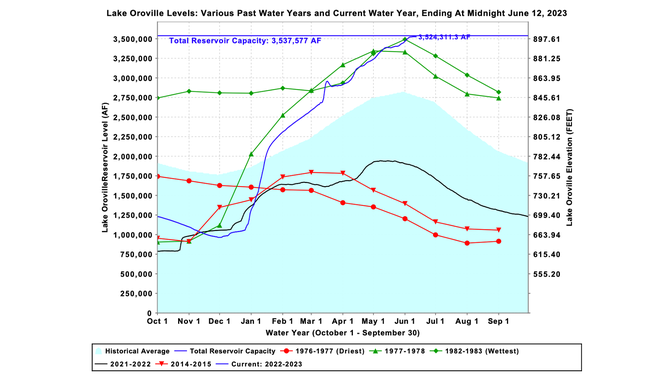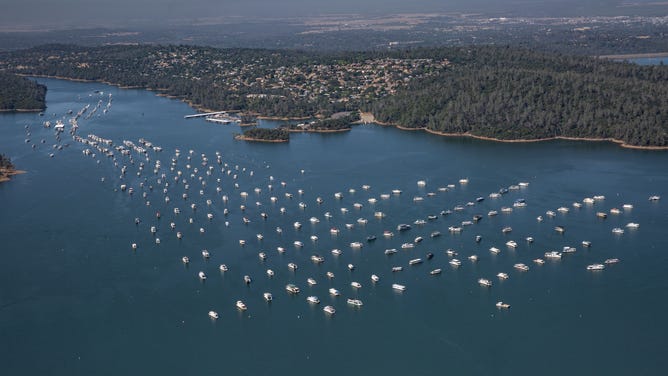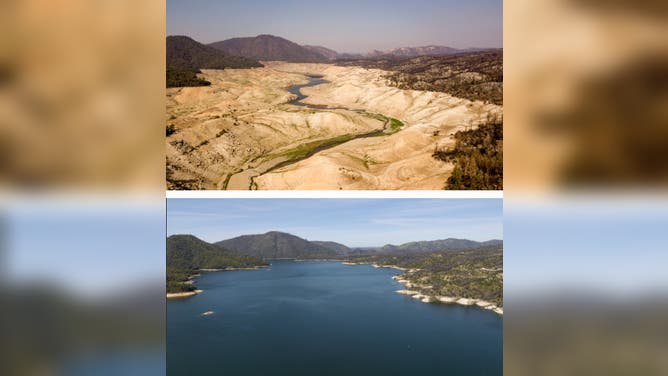California's Lake Oroville hits 100% capacity after undergoing dramatic recovery from drought
Formed by the tallest dam in the country, Lake Oroville reached a capacity of 126 percent of its historical average for this time of year, a level it has maintained for the past week.
Photojournalist reveals how California's reservoirs were replenished by atmospheric rivers
California photojournalist Josh Edelson captured stunning images of Lake Oroville before and after the extremely wet winter of 2023. Edelson noted that California's reservoirs were bordering on empty in 2021 compared to this spring when water was released from reservoirs in preparation for more rain.
OROVILLE, Calif. – Lake Oroville, the second-largest reservoir in California, reached 100 percent capacity on June 6 after experiencing months of low water levels.
Formed by the tallest dam in the country, Oroville Dam, Lake Oroville reached a capacity of 126 percent of its historical average on June 6. The reservoir has remained around this level for the past week.

Map showing location of Lake Oroville in California.
(FOX Weather / FOX Weather)
Just as significant as its current water level is how much it has risen since late 2022. In fact, the reservoir on Dec. 1 was at 27 percent capacity, which was only 55 percent of the historical average for that date. In the time since, the water level has risen more than 240 feet – or about a third of the height of Oroville Dam.
While water levels in the reservoir usually tend to increase between winter and spring, the drastic increase this year was largely due to 36 atmospheric river storms that dropped historic amounts of rain and snow over the Golden State. For reference, California usually has five to six atmospheric river storms per year.
The area around Lake Oroville, which is located in the Sierra Nevada mountains, saw the atmospheric river storms create record snowpack in the mountains. As spring came and temperatures rose, the record snowpack turned into record snowmelt as meltwater surged into rivers, lakes and other waterways – including reservoirs.
Lake Oroville, along with other reservoirs in California, experienced one of the driest periods on record about two years ago.

Line graph showing the total reservoir capacity of Lake Oroville, ending at midnight June 12, 2023 (note blue line).
(California Department of Water Resources / FOX Weather)
"In 2021, we had some of the worst drought we've had in California, so these reservoirs were extremely low and, in many cases, bordering on empty in some sections," said Josh Edelson, a photographer who documented the historic low water levels of Lake Oroville in September 2021.
"So going from 2021 to 2023, it's obviously a stark contrast," he added.

Lake Oroville, California's second largest water reservoir and fed by the Feather River nearing full capacity. May 23, 2023.
(George Rose / Getty Images)
According to the California Department of Water Resources, the state’s reservoirs have multiple purposes, such as aiding in flood protection, serving as places of recreation and serving as habitats for fish and wildlife.







